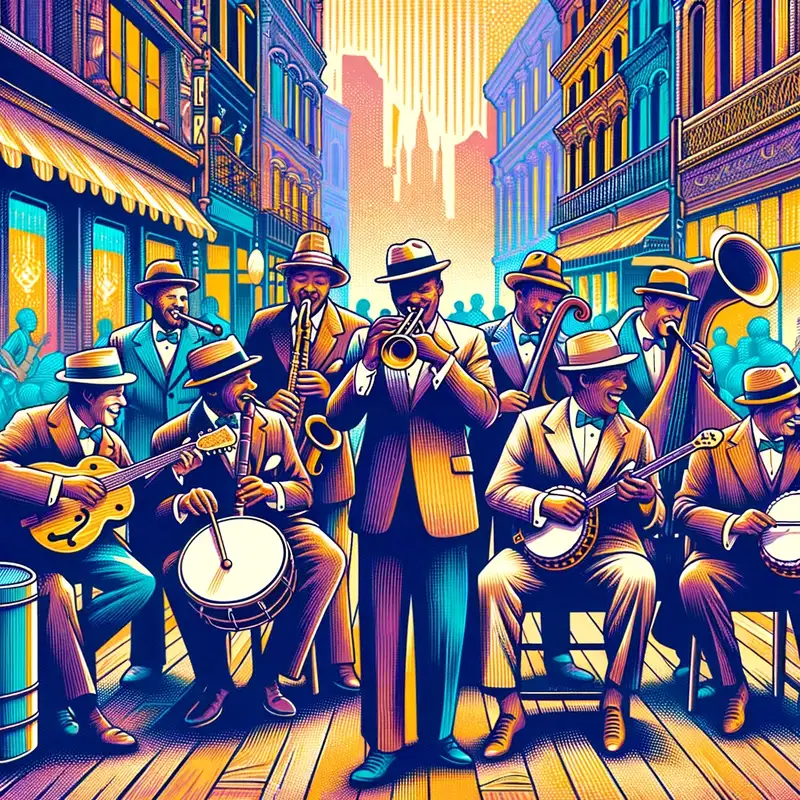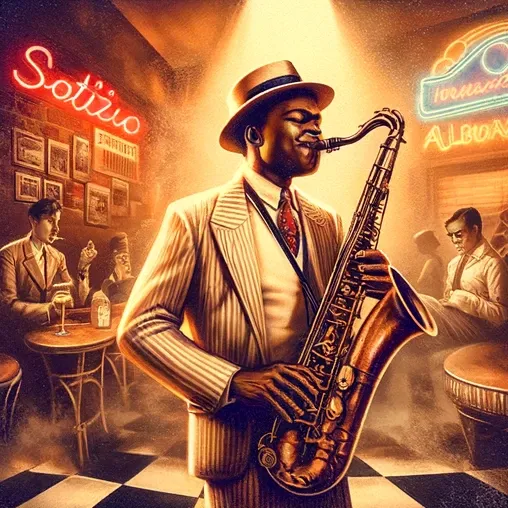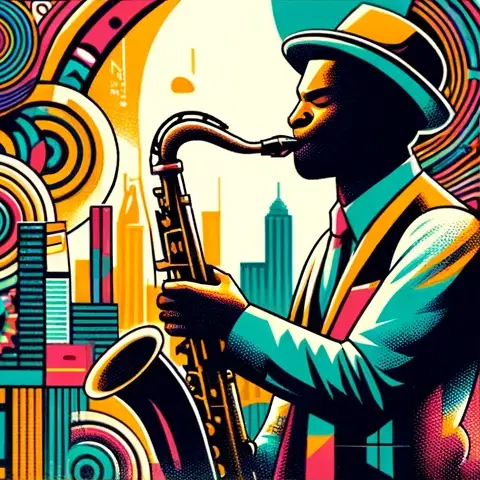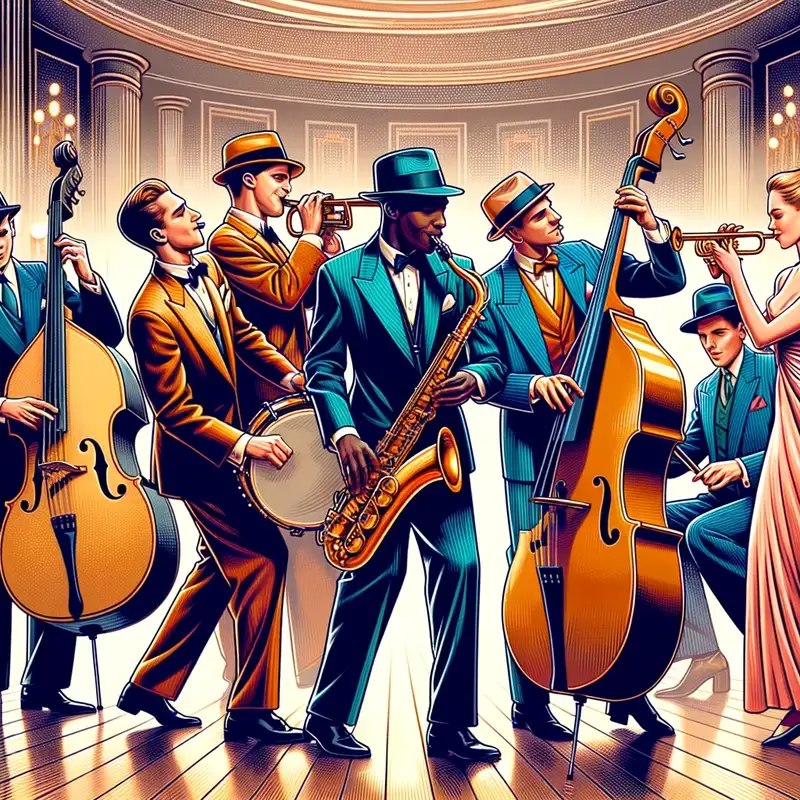Dixieland Jazz

Today we’re venturing into the heart of New Orleans to explore the infectious, smile-inducing world of Dixieland jazz. If you’ve ever found yourself tapping your foot to the upbeat tempo of a clarinet or trumpet, or felt the urge to dance like nobody’s watching when a trombone kicks in, you’re already familiar with the magic of Dixieland.
Table of Contents
The Birthplace of Dixieland
Dixieland, often called “traditional jazz” or “New Orleans jazz,” had its roots in – you guessed it – New Orleans, Louisiana. Around the early 1900s, the city was a melting pot of cultures and musical influences, from blues and ragtime to military brass bands. Out of this mix came a high-energy, improvisational style of music that would lay the groundwork for jazz as a whole.
The Instrumental Line-Up
In Dixieland, the band often consists of a “front line” and a “rhythm section.” The front line typically includes a trumpet (or cornet), clarinet, and trombone, while the rhythm section rocks a piano, drums, double bass (or tuba), and sometimes a banjo or guitar.
- Trumpet/Cornet: Takes the lead melody and sets the pace.
- Clarinet: Provides countermelodies and zesty improvisations.
- Trombone: Adds harmonic depth and a touch of humor.
The rhythm section keeps everyone in check and lays the foundation for all that toe-tapping goodness.
Iconic Dixieland Songs
You can’t talk Dixieland without mentioning some iconic tunes that get people off their seats. Songs like “When the Saints Go Marching In,” “Basin Street Blues,” and “Tiger Rag” have stood the test of time. These numbers usually start with a standard melody that everyone recognizes, but then comes the magic – each musician takes turns improvising, making every performance a one-of-a-kind experience.
The Legends: Names You Gotta Know
The world of Dixieland gave us some iconic musicians who became legends in their own right:
- Louis Armstrong: The Satchmo himself! Armstrong’s trumpet and gravelly voice are a big part of why Dixieland went mainstream.
- King Oliver: Louis Armstrong’s mentor, who led one of the most famous Dixieland bands.
- Jelly Roll Morton: A pianist and composer who claimed to have “invented jazz.”
- Sidney Bechet: A clarinet wizard whose recordings in the 1920s brought Dixieland to new audiences.
Dixieland Today
Don’t think Dixieland is just a relic of the past. This style of jazz is very much alive, not only in New Orleans but around the world. From street parades to jazz festivals, Dixieland bands still know how to get a crowd swinging. Modern bands often add a contemporary twist but keep the essence of Dixieland intact.
FAQ
What is Dixieland?
Dixieland Jazz, also known as Traditional Jazz or New Orleans Jazz, is a style of jazz that originated in New Orleans in the early 1900s. It’s characterized by its upbeat tempo, improvisational nature, and a specific ensemble of instruments including a “front line” of trumpet, clarinet, and trombone, backed by a “rhythm section” often featuring piano, drums, double bass, and sometimes banjo or guitar.
Where Did the Name “Dixieland” Come From?
The name “Dixieland” is believed to be derived from the term “Dixie,” which is a historical nickname for the Southern United States. This genre of jazz flourished in the vibrant cultural atmosphere of New Orleans and has been closely associated with the southern states.
Is Dixieland Jazz Still Popular?
Absolutely! Dixieland Jazz may have roots in the early 20th century, but it’s very much alive today. From jazz festivals to street performances, you can still experience the joy and energy of live Dixieland music, sometimes even with a modern twist.
How Is Dixieland Jazz Different from Other Jazz Subgenres?
Dixieland Jazz is more rooted in ensemble playing and features a lot of collective improvisation, especially from the “front line” instruments. While the roots are in blues and ragtime, the focus is on creating a lively, upbeat atmosphere. Other jazz subgenres like bebop, cool jazz, or fusion, have different focuses, such as complex chord structures, laid-back tones, or electronic influences, respectively.
Where Can I Experience Dixieland Jazz Today?
From New Orleans to New York, and even internationally, Dixieland Jazz can be found in various jazz clubs, festivals, and even some modern-day parades. In the age of the internet, you’re also just a click away from finding some great Dixieland playlists or live performances.


